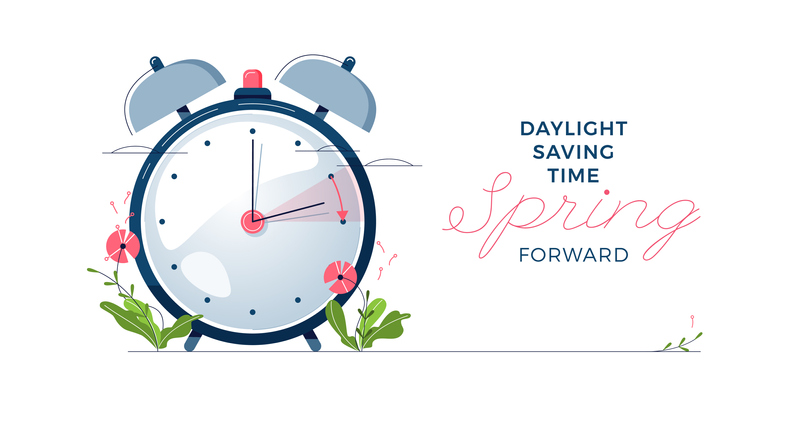On Sunday, March 13, at 2 a.m., we turn the clocks ahead for Daylight Saving Time and that means, among other things, more daylight in the afternoons. But it also means one less hour of sleep. I’m tired just thinking about it!
Here are some other things to think about:
- It’s actually “daylight saving time,” not “daylight savings time.” (I learned this as soon as I started looking up information for this blog.)
- Two states, Arizona and Hawaii, don’t observe daylight saving time.
- Daylight saving time was first used during World War I, to help to conserve fuel. The thinking was that using daylight more efficiently saves fuel and energy because it reduces the nation’s need for artificial light.
- About 70 countries around the world observe Daylight Saving Time.
- According to a University of Colorado at Boulder study, there is an increase in fatal motor vehicle accidents the first six days after the clocks spring ahead.
- There’s a spike in heart attacks during the first week of Daylight Saving Time, according to studies. Scientists have speculated that the loss of an hour’s sleep may make people more susceptible to an attack. When Daylight Saving Time ends in the fall, heart attacks briefly become less frequent than usual.
Daylight Saving Time also means spring is around the corner. For many, that means it’s spring cleaning time! So, we want to know your opinion about spring cleaning. Be on the lookout for a Just For Fun survey regarding your spring cleaning habits.
Have a great day!



Daylight Savings Time is a joke. I lose an hour of sleep. It is stupid because it still does not help the kids when they are going to & from school.
You mentioned the two states that do not observe daylight saving time, but one state, Indiana, does both. Some parts observe it, some parts do not. When I was managing the Chicago area, my salesman in South Bend, did not observe, so when I heard from him I always asked what time it was there.